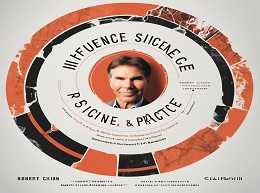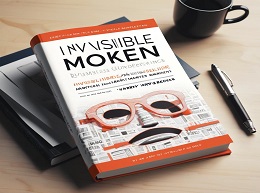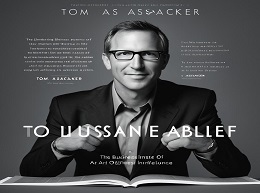Without Excuses: Unleash the Power of Diversity to Build Your Business

Unlocking Business Success with Diversity: A Review of "Without Excuses"
In "Without Excuses: Unleash the Power of Diversity to Build Your Business," Joe Watson presents a compelling case for the business advantages of embracing diversity. Drawing from his extensive experience as a corporate leader and diversity advocate, Watson argues that diversity is not just a moral imperative but a strategic asset that can drive innovation, performance, and growth. This review delves into the core themes of the book, enriched with real-world examples and actionable insights, to demonstrate how businesses can harness the power of diversity to achieve extraordinary success.
The Business Case for Diversity
Joe Watson begins "Without Excuses" by highlighting the significant benefits of diversity for businesses. He asserts that diversity in the workforce leads to enhanced creativity, better decision-making, and a broader range of perspectives, which are crucial for addressing complex business challenges. Watson dismantles common excuses that hinder diversity initiatives and provides a roadmap for leaders to foster an inclusive environment.
Example: Watson references a study by McKinsey & Company, which found that companies with diverse executive teams are 33% more likely to outperform their peers on profitability. This statistic underscores the tangible impact of diversity on business outcomes.
Cultural Resistance
One of the primary obstacles to diversity is cultural resistance within organizations. Watson explains that entrenched biases and a lack of awareness can create a hostile environment for diverse employees.
Example: Watson cites the case of a tech company where a predominantly homogenous leadership team struggled to attract and retain women and minority talent. By addressing unconscious biases through training and policy changes, the company was able to create a more inclusive culture, leading to a more diverse and innovative workforce.
Tokenism and Superficial Initiatives
Another barrier is the superficial implementation of diversity initiatives, where efforts are made to check boxes rather than create meaningful change. Watson warns against tokenism, which can lead to disillusionment and cynicism among employees.
Example: A financial services firm launched a diversity program but failed to integrate it into the core business strategy. As a result, the initiative had little impact on employee engagement or business performance. Watson emphasizes the importance of embedding diversity into the fabric of the organization to drive real change.
Leadership Commitment
Watson stresses that leadership commitment is crucial for successful diversity initiatives. Leaders must not only endorse diversity but also model inclusive behaviors and hold themselves accountable for progress.
Example: Indra Nooyi, former CEO of PepsiCo, made diversity a strategic priority by setting measurable goals, fostering an inclusive culture, and promoting diverse talent to leadership positions. Under her leadership, PepsiCo achieved significant strides in diversity and inclusion.
Comprehensive Recruitment Practices
To build a diverse workforce, companies must adopt comprehensive recruitment practices that go beyond traditional methods. Watson advocates for broadening the talent pool and using unbiased hiring processes.
Example: A leading consulting firm revamped its recruitment strategy to include outreach programs at historically black colleges and universities (HBCUs) and implemented blind hiring techniques to eliminate bias. This approach resulted in a more diverse candidate pool and higher levels of innovation within the firm.
Creating an Inclusive Culture
An inclusive culture is essential for retaining diverse talent. Watson outlines strategies for fostering inclusion, such as providing diversity training, encouraging open dialogue, and implementing flexible work policies.
Example: Google’s Employee Resource Groups (ERGs) provide support networks for diverse employees and offer insights into how the company can improve its inclusion efforts. These ERGs have played a critical role in shaping Google’s diversity and inclusion strategies, contributing to a more inclusive workplace.
Quantitative Metrics
Watson emphasizes the importance of using quantitative metrics to measure the impact of diversity initiatives. Key performance indicators (KPIs) such as employee diversity ratios, retention rates, and promotion rates can provide insights into the effectiveness of diversity efforts.
Example: A multinational corporation implemented a dashboard to track diversity metrics across various departments. This data-driven approach allowed the company to identify areas for improvement and adjust its strategies accordingly, leading to a more diverse and equitable workplace.
Qualitative Assessments
In addition to quantitative metrics, qualitative assessments such as employee surveys and focus groups can provide valuable feedback on the inclusivity of the work environment.
Example: A healthcare organization conducted regular employee surveys to gauge the inclusiveness of its culture. Feedback from these surveys informed the development of new diversity training programs and policies, which enhanced employee satisfaction and retention.
Real-World Success Stories
Watson enriches "Without Excuses" with real-world success stories of companies that have effectively leveraged diversity to drive business success. These case studies provide practical examples and inspiration for leaders looking to implement similar strategies.
Example: The case of IBM is particularly notable. Under the leadership of former CEO Lou Gerstner, IBM made diversity a strategic priority. The company established eight diversity task forces, each focusing on different demographic groups, to identify barriers and opportunities. This comprehensive approach not only improved diversity within IBM but also led to the development of new products and services tailored to diverse customer needs, driving revenue growth.
Addressing Unconscious Bias
Unconscious bias can undermine diversity efforts. Watson provides strategies for addressing these biases through training and awareness programs that help employees recognize and mitigate their own biases.
Example: A law firm implemented unconscious bias training for all employees, including partners, to create awareness and develop strategies for reducing bias in decision-making processes. This initiative led to more equitable hiring and promotion practices, enhancing diversity within the firm.
Sustaining Momentum
Maintaining the momentum of diversity initiatives is crucial for long-term success. Watson discusses the importance of continuous learning, regular assessment, and adapting strategies to sustain progress.
Example: A retail company established a diversity council to oversee and sustain its diversity efforts. The council regularly reviewed progress, identified new challenges, and adjusted strategies to ensure ongoing commitment to diversity and inclusion.
The Power of Diversity in Business
Joe Watson’s "Without Excuses: Unleash the Power of Diversity to Build Your Business" is a comprehensive and insightful guide for leaders seeking to harness the power of diversity. By addressing common barriers, providing practical strategies, and illustrating real-world success stories, Watson demonstrates that diversity is not just a moral imperative but a strategic advantage that can drive innovation, performance, and growth. Whether you are a CEO, manager, or aspiring leader, this book offers valuable lessons on building a diverse and inclusive organization that can thrive in today’s competitive business landscape.
Final Thoughts
"Without Excuses" is a must-read for anyone committed to driving meaningful change in their organization. Watson’s emphasis on leadership commitment, comprehensive recruitment practices, and the creation of an inclusive culture, combined with actionable insights and real-world examples, makes this book an invaluable resource for leaders at all levels. By embracing the principles and practices outlined in this book, organizations can unleash the power of diversity to build a more innovative, resilient, and successful business.













